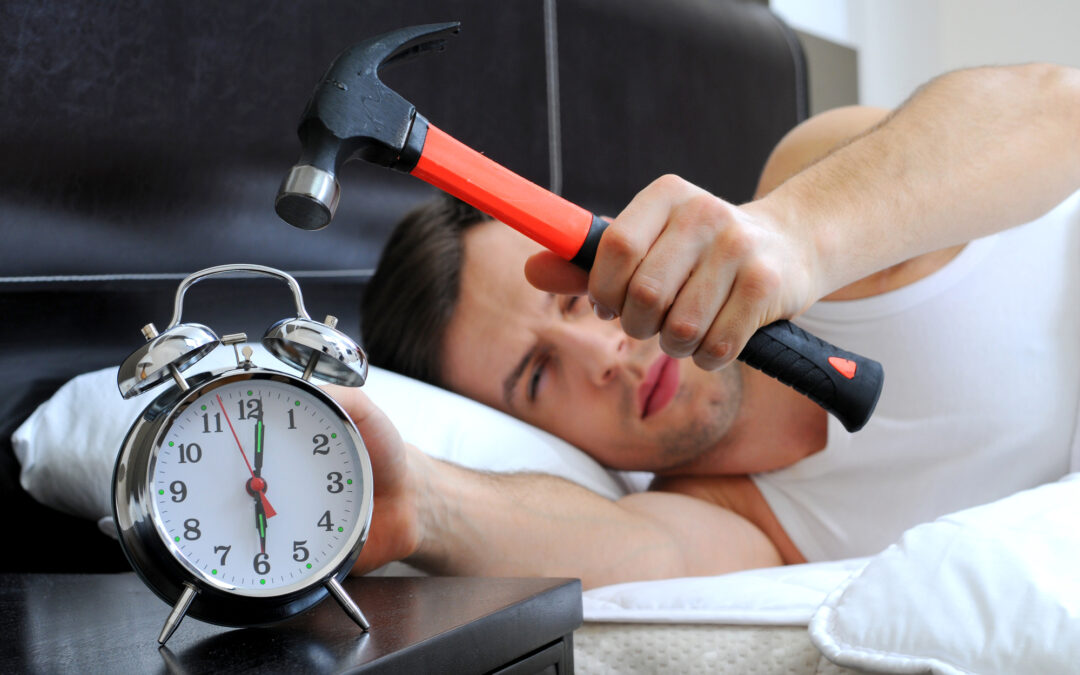This content has been archived. It may no longer be relevant
Sleep Well, Live Better
It’s well-established that sleep is essential to our physical and mental health. But despite its importance, a troubling percentage of people find themselves regularly deprived of quality sleep.
Though there’s a wide range of causes and types of sleeping problems, expert consensus points to a handful of concrete steps that promote more restful sleep. For many, trying to implement all these strategies can be overwhelming. But remember it’s not all-or-nothing; start with small changes and work your way up toward healthier sleep habits, also known as sleep hygiene.
Create a Sleep-Inducing Bedroom
Make your bedroom a place of comfort and relaxation. Though this might seem obvious, it’s often overlooked, contributing to difficulties getting to sleep and sleeping through the night. Focus on maximizing comfort and minimizing distractions.
Use a high-performance mattress and pillow: A quality mattress is vital to making sure that you are comfortable enough to relax. It also ensures, along with your pillow, that your spine gets proper support to avoid aches and pains.
Choose quality bedding: Your sheets and blankets play a major role in helping your bed feel inviting. Look for bedding that feels comfortable to the touch and that will help maintain a comfortable temperature during the night.
Avoid light disruption: Excess light exposure can throw off your sleep and circadian rhythm. Blackout curtains over your windows or a sleep mask for over your eyes can block light and prevent it from interfering with your rest.
Cultivate peace and quiet: Keeping noise to a minimum is an important part of building a sleep-positive bedroom. If you can’t eliminate nearby sources of noise, consider drowning them out with a fan or white noise machine. Earplugs or headphones are another option to stop abrasive sounds from bothering you when you want to sleep.
Finding an agreeable temperature: You don’t want your bedroom temperature to be a distraction by feeling too hot or too cold. The ideal temperature can vary, but most research supports sleeping in a cooler room that is around 65 degrees.
Optimize Your Sleep Schedule
Taking control of your daily sleep schedule is a powerful step toward getting better sleep.:
Set a fixed wake-up time: It’s close to impossible for your body to get accustomed to a healthy sleep routine if you’re constantly waking up at different times. Pick a wake-up time and stick with it, even on weekends or other days when you would otherwise be tempted to sleep in.
Budget time for sleep: If you want to make sure that you’re getting the recommended amount of sleep each night, then you need to build that time into your schedule. Considering your fixed wake-up time, work backwards and identify a target bedtime. Whenever possible, give yourself extra time before bed to wind down and get ready for sleep.
Be careful with naps: To sleep better at night, it’s important to use caution with naps. If you nap for too long or too late in the day, it can throw off your sleep schedule and make it harder to get to sleep when you want to. The best time to nap is shortly after lunch in the early afternoon, and the best nap length is around 20 minutes.
Adjust your schedule gradually: When you need to change your sleep schedule, it’s best to make adjustments little-by-little and over time with a maximum difference of one to two hours per night. This allows your body to get used to the changes so that following your new schedule is more sustainable.
Craft pre-bed routine: If you’ve a hard time falling asleep, it’s natural to think that the problem starts when you lie down in bed. In reality, though, the lead-up to bedtime plays a crucial role in preparing you to fall asleep quickly and effortlessly.


